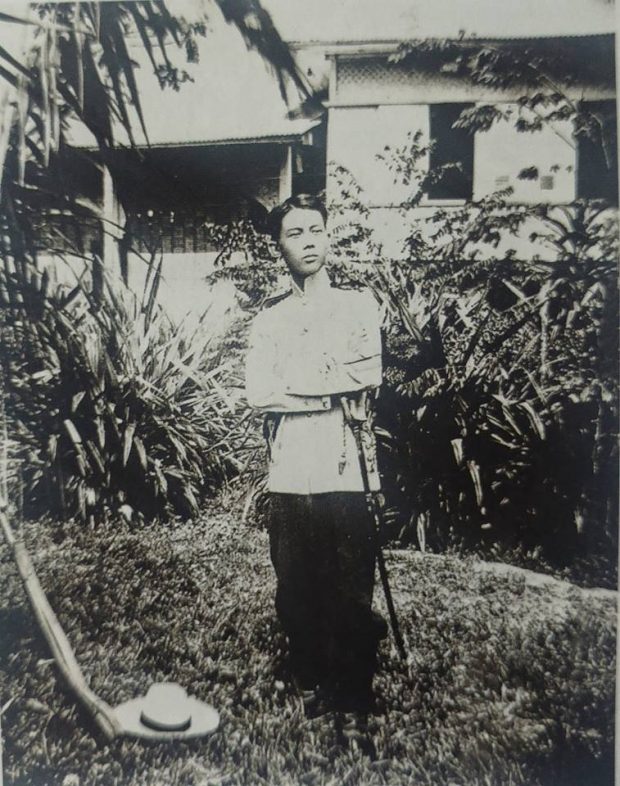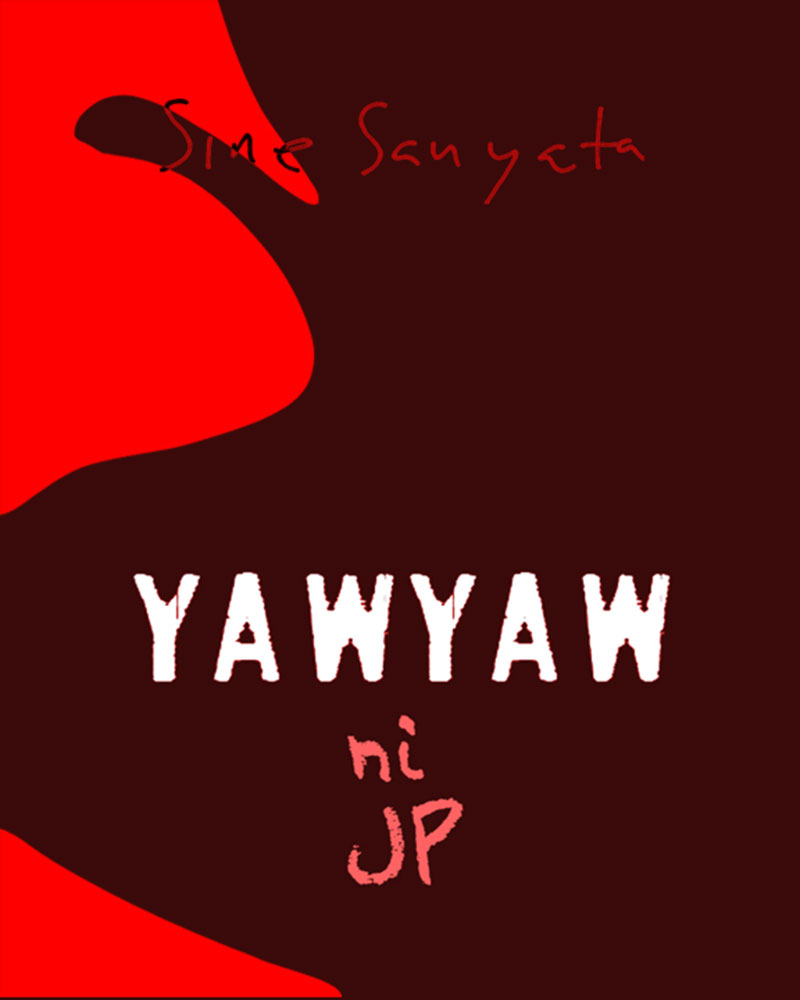The cineaste in me had some trepidation viewing Goyo, the nickname for General Gregorio del Pilar, coming on the heels of the box office hit Luna, that irascible General Antonio Luna who, like del Pilar, fought under President Emilio Aguinaldo (played by Mon Confiado) in the Filipino-American War.
Would a successful film dilute the creative juices of Jerrold Tarog for this next film, about a 23-year old “boy general” who takes up the cudgel of fighting for the newly formed Philippine republic after Luna’s untimely demise? Would more access now to funding complicate the script, be more nuanced, erratic and become an ego stroke for the director and producers?
Well, as I return from the movie premier, with a notebook full of scribbles, I confess to be quite taken by the depth of this cinematic experience. Goyo is a study in historical profundity, in dialogue bordering on poetry, in the cinematography of verdant mountains that chokes the heart, and in actors that have managed to approximate the heroes and villains we study and revere. In effect, director Tarog, the producers, the cast, and the crew outdid themselves.
The movies cuts to the chase at the very beginning. Luna has just been butchered by Aguinaldo’s soldiers, interesting in that this movie lays Luna’s death directly on Aguinaldo’s lap, the last one having pussyfooted on the issue. There’s a massive roundup of soldiers under Luna’s command including a high ranking officer, Col. Manuel Bernal (Art Acuna) who refuses to change his allegiance. For that he is tortured under the unfeeling eyes of Gen. del Pilar (Paulo Avelino) but still manages to throw insults at del Pilar, accusing him of following whatever Aguinaldo commands. He yells hauntingly at del Pilar, that he is, in effect, “not a soldier but a dog.” As del Pilar leaves the cell, the bloodied Bernal, at the point of snapping, yaps like a loyal dog with a humiliating bark which would stick with him, and haunt him.
In 1899, Less than six months after the start of the war, Aguinaldo’s forces suffer setbacks and flee to the north, to Dagupan in Pangasinan. They are there for five months providing respite and developing a more developed profile of del Pilar who it turns out is a sly flirt and a ladies’ man having broken many hearts in the towns they retreated to, as evidenced in the many pained letters from the ladies found in his sling bag.
Del Pilar as national lothario makes his real life boy-next-door image a lot sexier with the local lasses in their voluminous trailing ternos, fanning nervously, in near faint, with very apparent repressed desires. Casual sex hadn’t been introduced in those days.
There is one young lady that takes del Pilar’s fancy and probably every other gender and gender variation in the audience. She’s Remedios Jose (Gwen Zamora), the daughter of the town’s politico, and their first encounter is a study in 19th century Victorian encounter. As was the manner in those days, she communicates with her eyes, aptly described in 19th century literature as “Mapungay na mata” (dreamy, tender, liquid eyes).
With slight stifled breaths they are disarmed with one another but must keep a pretense, a nonchalance. Later, over dinner, he breaks the staring across the table and apologizes for the rude behavior displayed earlier. She politely says, to paraphrase, that she can handle any situation. Her father cheerily chimes in about having a strong daughter and this is Goyo first warning. She’s gorgeous but there’s going to be some serious hoops before she is “conquered.” Goyo, probably used to fainting violets had met his imperturbable match.
Months into the courtship, Remedios does not let up. In her self possessed way, she probes his past and wonders whether she’ll be conquest number 101. In a romantic and sensual court dance in the family house, as they slowly sway, hold hands, uncouple, approach, take in each other’s cologne and sweat tinged with yearning, she continues with her sweet and earnest inquisition. She not only chides him for being a potential heartbreaker but may possess heroic delusions that will get in the way of her just wanting a man, for keeps, at her side.
Del Pilar pledges fealty while Remedios must now deal with one ex of his, Felicidad Aguinaldo (Empress Schuck) who, in a market scene with Remedios, does a tit-for-tat with sharpened verbal claws. Remedios notes that many of the over ripe mangoes may have to be disposed. Felicidad snidely suggests to Remedios she could be one of them warning her of Goyo’s record of dispensing many other “mangoes.”
Oooh, this scriptwriter has an ax to grind. But Remedios is unfazed. She responds gently back, eyebrows raised, how ever could Felicidad think such, since she’s not a mango. Touche! Three snaps.

Photo: General Gregorio del Pilar, from Our Islands And Their People, 1899. Ortigas Library Collection
With Goyo’s peccadillos revealed and accepted as the masculine norm, we return to the crucial Philippine American war.
Apolinario Mabini (Epi Quizon), prominent in Luna, continues his sphinx-like pronouncements of the state of the nation. He has left the Aguinaldo cabinet soon after Luna’s death and was also to the left of Aguinaldo’s growing pro-American cabal. He has some profound, hurting lines about his countrymen, apropos still to today’s current congress. He calls Aguinaldo’s people a bunch of clowns. And given the behavior of the populace, a propensity for a good time over serious affairs, Mabini declares not once but twice that we are deserving to be called children. It’s an “ouch” but an irrevocable one till, perhaps, we get our act together.
Mabini has grown since the last movie, only fitting since he was at the early stage of the Aguinaldo cabinet very confident of its independent direction. Now, it seems unlikely. When eventually, Aguinaldo pays him a call, goads him to return and offers him the position of chief justice, Mabini accepts with a heavy heart uttering his acceptance only for the country’s sake.
Meanwhile, Goyo has flashbacks of a bloodied Col. Bernal yapping and tormenting him, literally dying of laughter. One night, in a drunken stupor in the river he deludes himself with blood coming out of his mouth, thinking his life is over under water. We witness a premonition of his death and possibly, the failure of his allegiance to Aguinaldo.
These intermittent nightmares are exacerbated by news of the Americans in Manila playing hardball: they first push the Filipino soldiers further away from laying siege on the Spaniards in Manila. In a meeting between Aguinaldo’s emissary, General Alejandrino (Alvin Anson) and American Generals Elwell Otis (Edward Rocha) and Arthur MacArthur (Miguel Faustmann) the Americans have only the mindset that the Filipinos possess a rogue president thus insinuating its army illegitimate and the fledgling republic an illusory sham to be vanquished. Luna, sadly six feet under, seems to have been right not to trust the Americans at all.
The American forces head north to put to rout the remaining Filipino forces and capture Aguinaldo. It is a demoralizing spectacle, a long trail of soldiers and civilians, on foot, reaching towns friendly or otherwise, scrounging for food moving northward and arduously ascending the Cordillera Mountains.
The sacrifices and misery inflicted on citizens are visually articulated in this movie with extras in the hundreds if not thousands, multiplied ably by visual effects. As a photo-historian, I find several instances in the movie where the melding of a scene, replicating a pose, imprinted as a photograph quite moving. Gen. del Pilar poses with an air, leaning on his sword. In another, in full military regalia astride his favorite white horse and flanked by his men the moving act of the pose and later, stilled and embedded in an albumen print galvanizes in the viewers the authenticity of the Boy General. He is a real historical figure, the army commanded was real and their earnestness in the love for a country real as well.
In the mountains, Aguinaldo moves ahead to elude capture ordering Gen. del Pilar with 60 men to be the rear guard on a mountainous pass called Tirad. Despite the ideal vantage point, seeing where the enemy is, the Filipinos are outmanned and sharpshooters of the 33rd Volunteer Infantry manage to take deadly aim even from below, at the Filipinos up on the ridge.
This last of the fighting scene is excruciating and as every Filipino soldier falls dead, the enchanting Cordillera mountains undulate in gratitude and sadness. The sharpshooters reach the top and Gen del Pilar is the last to retreat and eventually shot, and his whole body stripped of his possession and clothing. The Americans recognized the young general’s bravery and scrambled for mementoes of him.
Aside from the exquisite needle-point handkerchief given to him by Remedios, stripped by the soldiers from his bag, there was his diary with a last entry the day before. There are several varying accounts of his entry but I rely on Marcial Lichauco’s American Conquest of The Philippines which cites the war correspondent Richard Henry Little’s transcript of Gen del Pilar’s diary.
It reads “The general (Aguinaldo) had given me the pick of the men that can be spared and ordered me to defend the pass. I realize what a terrible task is given to me. And yet I feel that this is the most glorious moment of my life. What I do is done for my beloved country. No sacrifice can be too great.”
This movie’s historical period has parallels with today’s troubling events. The American forces, the ascending imperial power then, went land-grabbing and eventually took over the land. Today’s new Chinese imperial power, is starting with some of our islands and we are in bated breath as to what’s next.
Unquestioning loyalties to strongmen like Aguinaldo resulted in numerous failures and even needless deaths. There seems to be a thread with that and today’s strongman Duterte.
Mabini has the most unkind cut of all, declaring us as unfit children not to be trusted. Are we still that today, Lacking a a mature political will and incapable of making our country liveable and fulfilling to all? I’m afraid it’s still a long way off.
The movie is powerful and blends the right amount of romance and levity in a serious historical narrative. It will require thinking caps for all who want to see the best of outcomes for our country. Goyo soberly points us in the right direction. #
The author is the executive director of the Ortigas Foundation Library.


